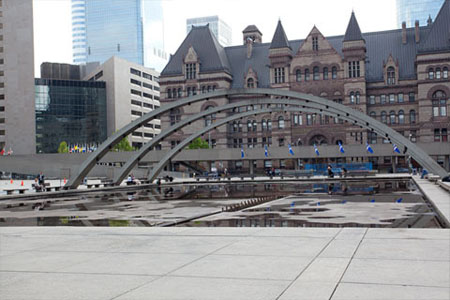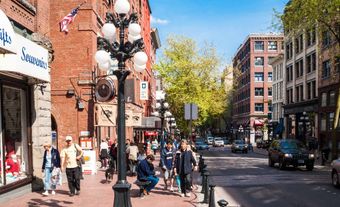This article is from our Toronto Feature series. Features from past programs are not updated.
This content is from a series created in partnership with Museum Services of the City of Toronto and Heritage Toronto. We gratefully acknowledge funding from the Ontario Ministry of Tourism, Culture and Sport, and the Department of Canadian Heritage.
"Slum Conditions in the Shadow of Old City Hall"
"The truth is that one half not only does not know," a 1911 report on the city's slum problem chastised well-off Torontonians, "they do not want their peace of mind disturbed by the unpleasant details of the life and sorrows of the lower classes."
Toronto City Hall had long resisted the public health reforms necessary in a turn-of-the-century industrial centre. But newly appointed Medical Officer of Health, Dr. Charles Hastings--an obstetrician who turned public health advocate after the contaminated milk-related death of his infant daughter--commissioned the in-depth study.
Hastings' inspectors fanned out across rough-and-tumble neighbourhoods like The Ward, which stretched from College to Queen, and from Yonge to University Avenue. Then known as the city's worst slum, The Ward was densely packed with rough accommodations whose low cost attracted immigrants newly arrived from across Eastern and Southern Europe, and Asia.
Visiting over 5 000 homes, the inspectors documented all they saw and smelled, from leaky roofs and peeling wallpaper to overflowing outdoor privies. They often visited late at night to more accurately apprise the true number of inhabitants--often single immigrant workmen but also families--sharing over-crowded flophouses.
Supplemented with dramatic photographs, the shocking 1911 report enabled the city's public health department to implement far-reaching reforms, including stricter housing regulations, food safety measures and education programs. By Hastings' retirement in 1929, Toronto was among the world leaders in public health reform.

 Share on Facebook
Share on Facebook Share on X
Share on X Share by Email
Share by Email Share on Google Classroom
Share on Google Classroom





